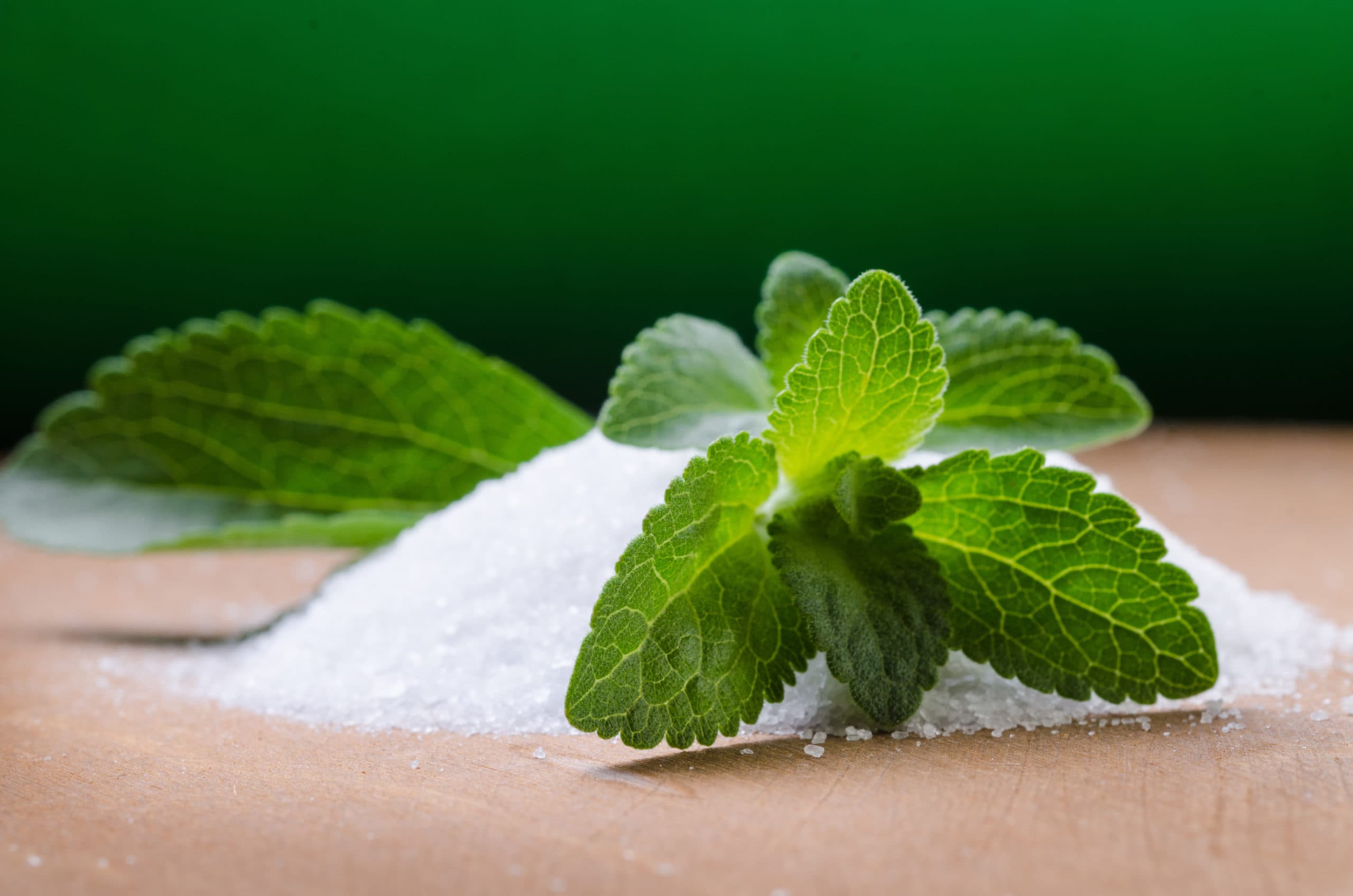On top of insulin, exercise, and a healthy diet, people with diabetes must also pay attention to their sugar consumption to avoid spikes in blood sugar. Blood sugar management is the root of diabetes management, and avoiding foods or drinks that impact blood sugar levels is something to be very diligent about. But, it doesn’t mean people with diabetes don’t get to enjoy the sweeter things in life. Sugar and sweetener alternatives can help alleviate that craving and allow people with diabetes to experience the same sweet flavors of sugar without the concern of a blood sugar spike.
Table of Contents
Here are the Best Sweeteners and Sugar Substitutes.
Stevia
Stevia is a natural sweetener derived from a plant called Stevia Rebaudiana. Stevia is actually about 300 times sweeter than table sugar but also has a bitter aftertaste. People with diabetes should be mindful of brands that put additives in their stevia to offset that bitter taste. In general, though, natural Stevia has 0 calories and will not raise your blood sugar. Some popular brands include Truvia and SweetLeaf and are safe to consume if you have diabetes. In fact, Stevia is often marked as the safest sweetener for people with diabetes.
Aspartame
Aspartame is a commonly used sugar substitute, and if you ever see something marked as sugar-free or diet (like Diet Coke), chances are aspartame has been used to replace sugar. Aspartame is about 200 times sweeter than table sugar but isn’t a perfect 1 to 1 substitute for sugar when it comes to baking. It won’t withstand high heat, so it is much better suited as a tabletop sweetener for coffee and things like that. Aspartame has also been linked to some occasional side effects and should be avoided by people with certain neurological disorders. You can read more about that here.
Sucralose
Sucralose is one of the most popular artificial sweeteners used today and is sold under the name Splenda, which you’ll often see at diners as a sugar-free option to your coffee. You will also find sucralose listed as an ingredient in everything from sugar-free gum to a wide array of sugar-free soft drinks and other diet products. Sucralose is one of the sweetest of all artificial sweeteners, but it’s also ideal for baking as it can withstand high heat, unlike its counterpart aspartame.
Tagatose
Tagatose is an intriguing form of fructose as it is sometimes occurring naturally in fruits (apples and oranges), and it also shows great promise in managing type 2 diabetes. Tagatose has a low glycemic index. Many people with diabetes follow a low-GI diet which would allow for major benefits from Tagatose as a sugar substitute.
Saccharin
If you’ve ever seen Sweet’N Low at your local restaurant, then you’ve seen saccharin. Saccharin is another popular artificial sweetener with no calories and can be up to 700 times sweeter than your average table sugar. Be mindful when using this type of sweetener, as it can take time to figure out how much you want to taste.
Sweeteners to Avoid
Some people may think that sugar substitutes, in general, will be better than using regular sugar, particularly in baking, but this isn’t the case. Many sugar substitutes that aren’t the artificial or natural sweeteners above are intended for use by diabetics and, in fact, can and will raise blood sugar levels. Some of those natural sweeteners to avoid include:
- Coconut Sugar
- Agave Nectar or Syrup
- Honey
- Molasses
- Fruit concentrates
- Fructose
In addition to natural sweeteners, reduced-calorie sweeteners should also be avoided. These are usually found in sugar-free candy or chewing gum but actually have more calories than artificial sweeteners and can raise blood sugar levels. If you are reading labels and see isomalt, sorbitol, xylitol, or mannitol (to name a few), that product should be avoided.
Things to Watch out for
While it may be exciting to find some natural sweeteners to take the place of sugar, there are some critical things to watch out for and pay attention to to avoid any issues with blood sugar levels.
Like we stated, it’s important to watch out for companies who make artificial sweeteners but put in additives to help prevent any bitter taste with sweeteners such as stevia.
Sugar substitutes can also be very costly, depending on name brands and how much you use them. The best bet is to avoid eating things that require sugar and thus sugar substitutes. A well-balanced diet can be your best defense against rises in blood sugar levels. Plus, when you eliminate those sweet foods, you often begin to crave them less.
If you are looking for a sub for using sugar in baking, be mindful of certain substitutes that cannot withstand high temperatures. These substitutes will completely lose any of their sweet flavors and may not bind in the baking good. Stevia works great but is much sweeter than regular sugar, and so it might take some time to get the flavor right. And sucralose also works great with high temps and can be used for sweetening hot drinks or baking.
And lastly, natural sweetener doesn’t always mean better. Stevia is zero-calorie, but others may not be. And things like honey or apple sauce being used in place of sugar when baking will have the same effect for diabetes as they contain natural sugar and carbs that can still affect blood sugar levels.
For more tips on balancing blood sugar effectively, please visit our blog post with tips and tricks and read more about our fantastic glucose meter.










